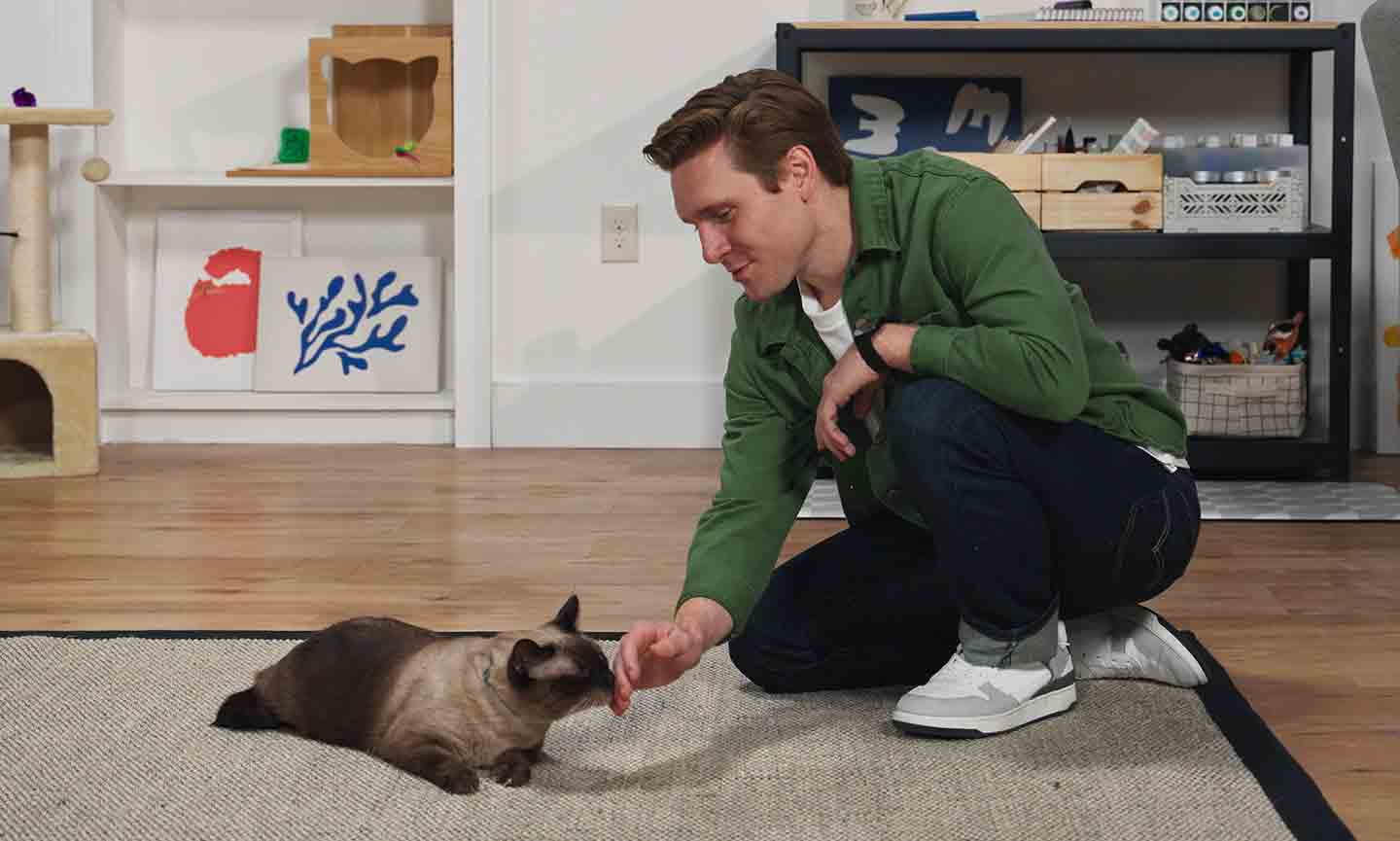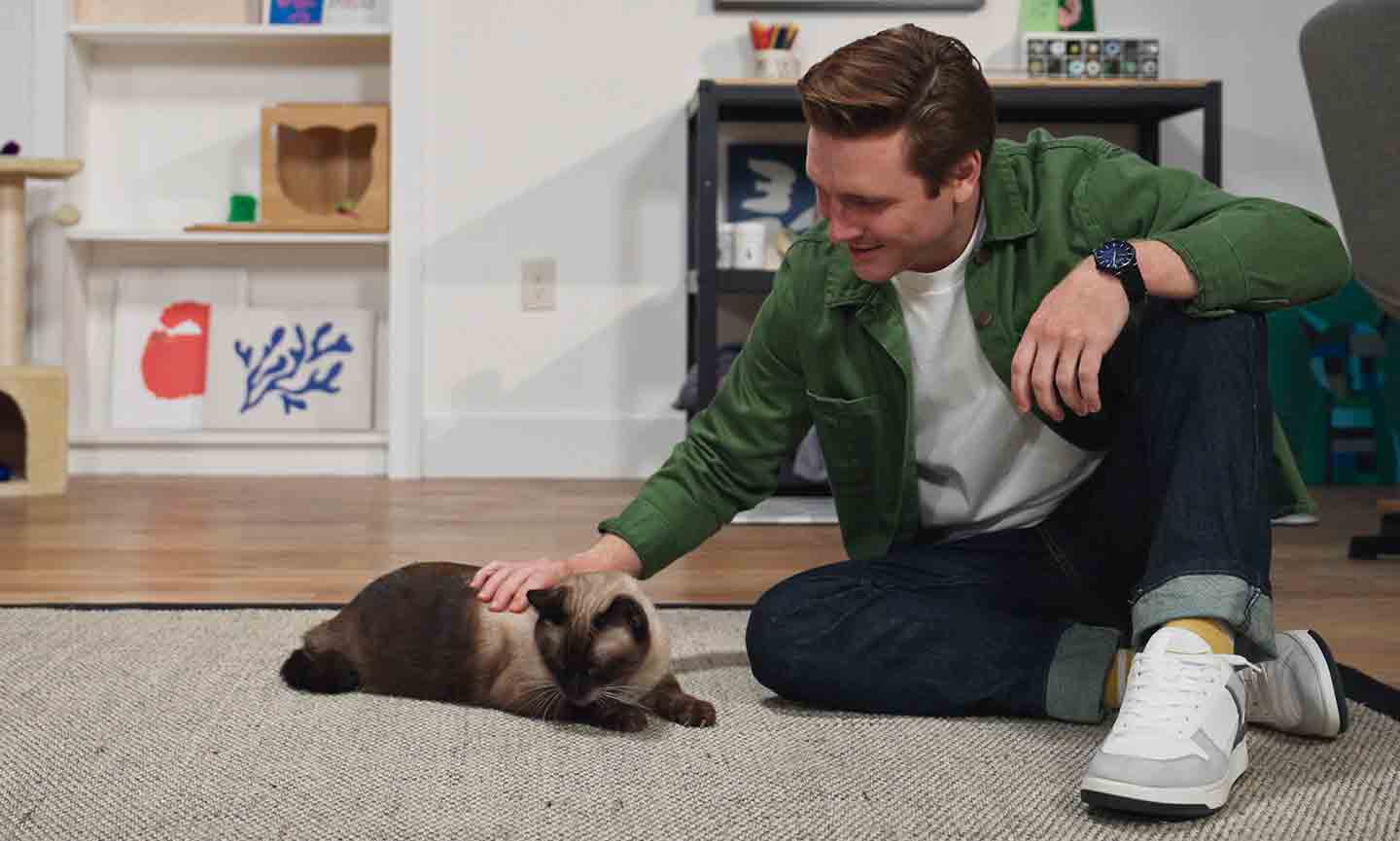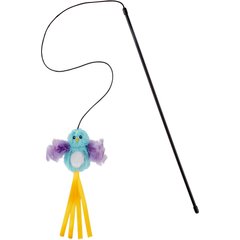How To Pet Cats: The Essential Guide
Cats know what they like. From the first bite of breakfast to the last nap of the night, our feline friends have strong preferences (some may even say demands) and high standards.
So, it’s no surprise that petting a cat isn’t quite as easy as it sounds. While some kitties are more easygoing than others, in general, successful handling requires some patience, practice and cat body language know-how. However, it’s well worth the time invested—in addition to strengthening the bond between you and your furry companion, studies have shown that petting a cat can actually reduce your own stress!
Ready to pet like a pro? Whether you just welcomed home a new cat or are simply looking to improve your technique, read on for step-by-step instructions and expert tips.
How To Pet a Cat: Step-By-Step Instructions

1. Play It Cool
Unlike, say, your goofball Golden Retriever, cats like to make the first move. For best results, allow the kitty in question to come to you, says Los Angeles–based, certified feline behaviorist Susan Nilson, CABTi. “Like many of us, cats like to feel in control of their environment,” Nilson says. “If you are patient and wait until your cat is ready to approach you, she’ll quickly learn that she can trust you.”
Once the cat does approach you, resist the urge to reach out. “As humans, we have a tendency to reach out and pet our cats on the top of their heads, but this can be intimidating to the cat,” cautions Nilson. “Instead, try crouching or sitting down on the ground, and let your cat come to you and rub against you. That’s when you know you have a solid starting point to interact!”

2. Offer a Hand
Every cat is different, but most cats like to check a person out before getting physical, advises Nicole Savageau, VMD, an Austin, Texas–based veterinarian with The Vets. “Allow them to see and sniff your hand before attempting to pet them.” Think about it—you wouldn’t want someone unfamiliar just grabbing you out of nowhere either, right?

3. Pet Their Head or Back
Once your cat seems comfortable with your hand in close proximity, go in for a pet. Most cats enjoy gentle strokes from the top of their head down to the base of their tail, Dr. Savageau says, so start there. Make sure to stroke your cat in the direction of their fur; stroking against the grain may be uncomfortable for your cat (and if so, they’ll definitely let you know about it).
Once things are underway, keep it low-key. “Be gentle and avoid petting too roughly. Use slow, gentle strokes rather than fast or erratic movements,” says Dr. Savageau.

4. Watch Their Body Language
Cats can’t give verbal feedback, so pay attention to your pet’s body language to ensure they’re calm and comfortable. Some signs that your cat is enjoying the petting include:
- Purring
- A loose, relaxed posture
- Leaning into the petting
- Closing their eyes
- Kneading with their paws
Knowing when to stop a petting session is just as important. If you see these signs, it’s time to back off:
- Twitching tail
- Flattened ears
- Stiff posture
- Stopping purring
- Trying to move away from you
Where Do Cats Like To Be Petted?
Every cat is an individual, with their own picky preferences and cute quirks. However, there are some safe bets when it comes to where to pet a cat.
“Research shows that cats typically enjoy being touched along the back toward the base of the tail, and especially around the head,” says Nilson. “Cats have scent glands around the lips, chin, cheeks, between the eyes and ears, and at the base of the tail, which they use for communication, and these areas can be favorable spots for petting.”
Many cats, in particular, enjoy being stroked under the chin or on the temples, adds Nilson.
Do Cats Like Belly Rubs?
While dogs are known for loving a good belly rub (or 20 good belly rubs), it’s a little trickier with cats. The vulnerable underside is traditionally a no-go among felines, yet some do enjoy it, says Dr. Savageau.
“Some cats love belly rubs, while others may find them uncomfortable or threatening,” she says. “Approach with caution, and pay attention to the cat’s signals. If they roll onto their back and expose their belly willingly, they may enjoy belly rubs. However, be prepared to stop if they show signs of discomfort or agitation.”
How To Get a Cat To Like You
If you just recently met your new furry friend, expect some handling hesitancy. Some cats will never enjoy petting, while others just need some time to warm up to new people and environments.
“It is important to honor the personality of a cat who is new to your home,” says Michelle Burch, DVM, a veterinarian based in Poulsbo, Washington. “For some cats, handling may need to be delayed as they adjust to their new environment.”
During this time, some kitty-friendly props may speed along the bonding process and entice your new companion to come say hello:
- Pheromones: Install a pheromone diffuser or spray the bedding with a pheromone spray” says Dr. Burch.
Recommended Products
- Engaging toys: “I recommend purchasing a variety of toys to include wands, mice, balls and puzzle toys,” says Dr. Burch. Keep in mind that each cat will have their own toy preference, so it may take some trial and error to discover what your cat loves best.
Recommended Products
- Treats: “Treats can be used with shy and timid cats who are nervous about coming out from their safe space,” says Dr. Burch. Casually place the treats near your cat’s space, then leave the area and allow them to explore when they’re comfortable, she says.
When your cat is ready (and only when they’re ready!) let the petting begin.
FAQs About Petting Cats
Do cats like being petted?
If properly socialized with humans as kittens, most cats do like being petted. Some cats will only accept petting from one or two trusted humans, while others may enjoy petting from any friendly hand.
How do you get a cat to like you?
Cats like interaction on their own terms, so keep calm and allow the cat to approach you first. When petting, move slowly and gently, paying close attention to the cat’s body language.
What is the correct way to stroke a cat?
Most cats enjoy slow, gentle, head-to-tail strokes, going in the direction of their fur.
As a pet parent, it’s important to understand cat behavior and the best way to pet a cat. (After all, your feline friend can’t offer tips!) Body language is key for communication, and there’s always more to learn as a cat parent. To continue your kitty education, get your paws on these 10 secret messages your cat is sending you with their tail.
Expert input provided by certified feline behaviorist Susan Nilson, CABTi; Dr. Nicole Savageau, an Austin, Texas–based veterinarian with The Vets; and Dr. Michelle Burch, a veterinarian based in Poulsbo, Washington.















